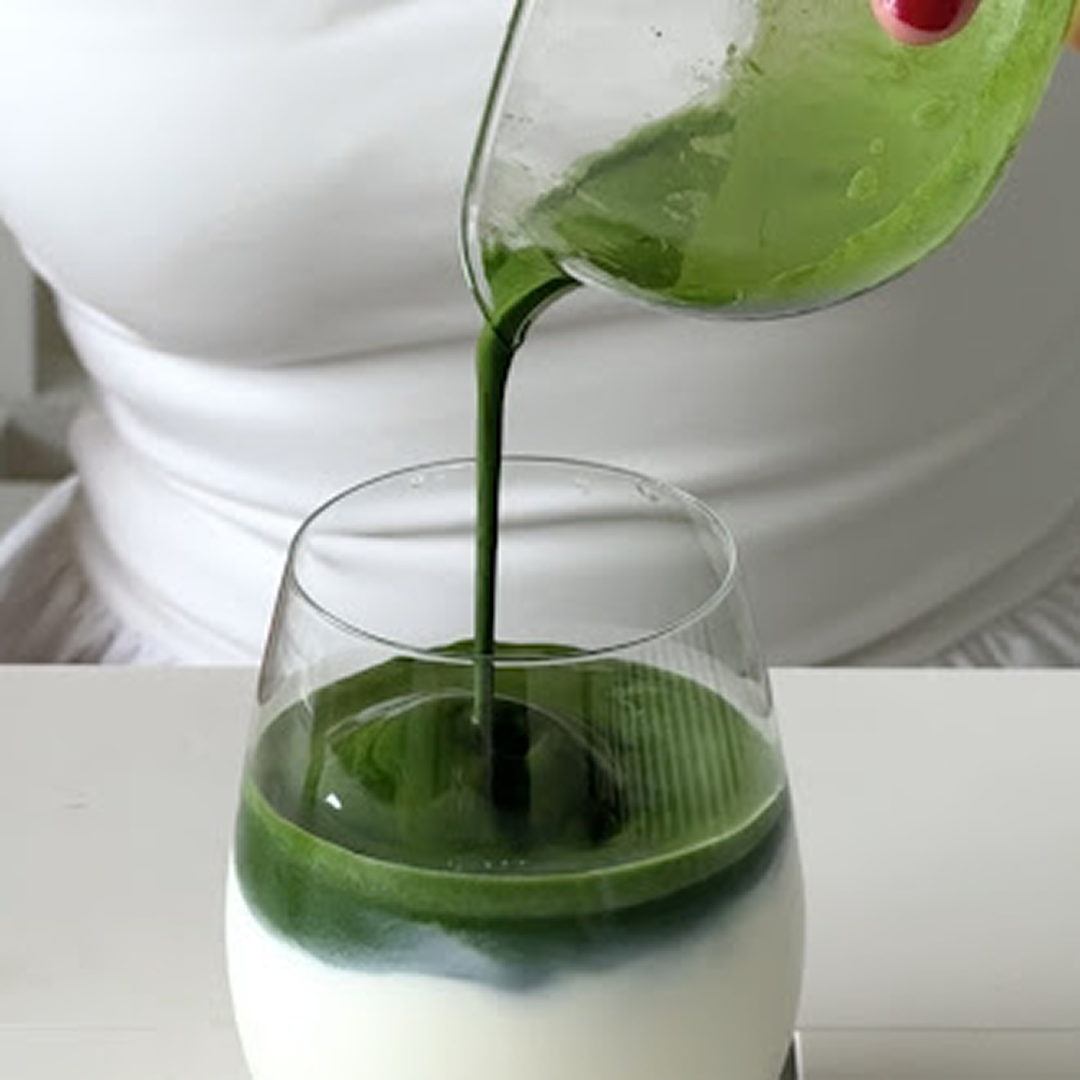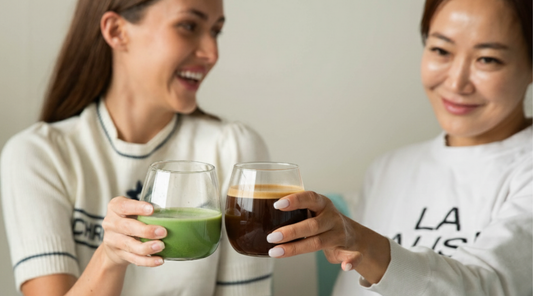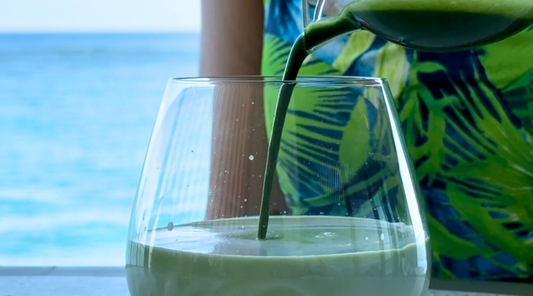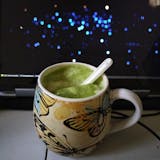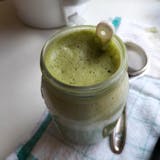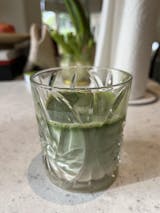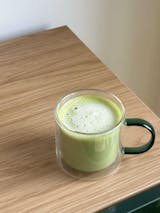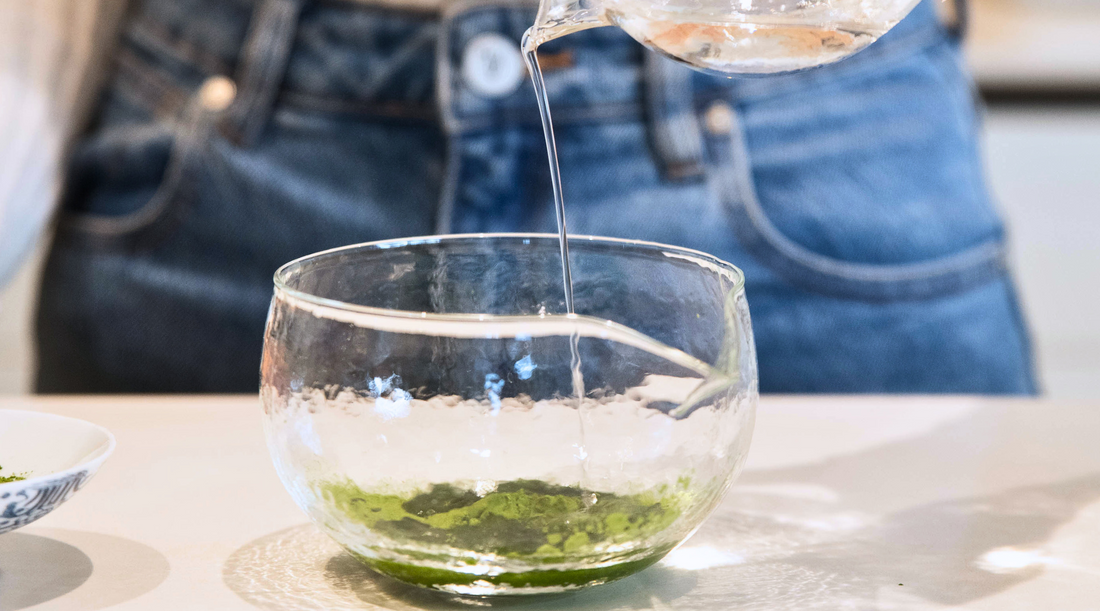
The Perfect Matcha to Water Ratio: Usucha, Koicha, and Lattes Explained
Share
The ideal matcha to water ratio depends on the preparation style. For everyday usucha (thin tea), use about 2 grams of matcha with 60-80 mL of hot water. For ceremonial koicha (thick tea), double the powder and reduce the water to create a rich, velvety texture. And for modern drinks like matcha lattes, many tea masters recommend the Golden Matcha Ratio – about 4 grams of matcha with 40-60 mL water, then balanced with 160 mL milk for hot lattes or 240 mL milk for iced lattes.
These ratios are the foundation of matcha preparation, balancing flavour, texture, and even the calming energy matcha is known for. But there’s more to it than measurements. The right ratio also depends on your matcha grade, whisking method, and personal taste. In this guide, we’ll explore the classic ratios, advanced variations, and how to find your own perfect balance.
Why the Matcha to Water Ratio Matters
Unlike loose leaf tea, which steeps and then gets discarded, matcha is fully consumed. That means every gram of powder goes into your cup, along with its nutrients, antioxidants, and caffeine.
The ratio affects not only flavour but also:
- Colour and foam: too much water can dull the vibrant green or weaken the crema-like froth.
- Mouthfeel: higher matcha concentration gives a creamy body, while more water produces a lighter, tea-like texture.
- Digestibility and caffeine: a concentrated bowl provides a stronger buzz, while a thinner bowl feels gentler.
The Standard Matcha to Water Ratio (A Starting Point)
If you’re new to matcha, begin with the classic usucha ratio:
- 2 grams of matcha (about 1 teaspoon or 2 bamboo scoops)
- 60-80 mL of hot water (around 70-80 °C)
This is the most widely accepted proportion for everyday matcha preparation. It’s balanced, approachable, and a perfect foundation for experimenting further.
This ratio is still taught in traditional tea schools such as Urasenke in Kyoto, where centuries of practice emphasize balance and refinement in every bowl (Urasenke Foundation).
Usucha: Everyday Thin Tea
Usucha, or “thin tea,” is what most people picture when they think of whisked matcha. Prepared with about 2 grams of powder to 60-80 mL of water (70 °C), it’s light, frothy, and refreshing.
The whisking technique also plays a role: whisk in a fast “M” or “W” motion to create a fine foam. Usucha highlights the delicate sweetness and subtle umami of high-quality ceremonial grade matcha.
For more details about the differences between usucha and koicha, check out "Usucha vs Koicha - The Ultimate Guide to Thin and Thick Matcha."
Koicha: The Rich, Thick Matcha
Koicha, or “thick tea,” is an entirely different experience. Traditionally served in formal tea ceremonies, it requires a higher matcha to water ratio:
- 4 grams of matcha (2 teaspoons or 4 scoops)
- 30-50 mL of hot water (70 °C)
Instead of whisking for foam, koicha is gently kneaded with the whisk into a rich, velvety texture. The result is dense, almost syrupy, with deep umami and sweetness.
Because koicha concentrates flavours, it must be made with the highest grade matcha – first harvest, stone-milled, and rich in amino acids. Lower-quality powders would turn bitter at this intensity.

Matcha Latte Ratios (Hot & Iced)
Modern matcha drinkers often ask: “What’s the best matcha to water ratio for lattes?” A proven guideline is the Golden Matcha Ratio – a balanced formula that delivers consistent flavour, creaminess, and texture every time.
The Golden Matcha Ratio
- Base Ratio (4:40): 4 g matcha · 40 mL hot water (70 °C)
- Hot Matcha Latte (200 mL): 4 g matcha · 40 mL hot water (70 °C) · 160 mL milk
- Iced Matcha Latte (300 mL): 6 g matcha · 60 mL hot water (70 °C) · 240 mL milk
Here, ceremonial grade matcha makes all the difference – its natural sweetness pairs beautifully with oat, almond, or dairy milk, while culinary grades often taste bitter and dull.
*Always whisk the matcha with hot water first before adding milk – this prevents clumping and ensures a silky finish.
To help you choose the best option for your latte, explore our full guide: "Best Milk for Matcha Lattes: Oat, Almond, Soy, Coconut or Dairy?"
Adjusting Ratios for Taste & Preference
There’s no single “perfect” matcha to water ratio. Instead, think of it as a spectrum. Some people prefer the gentle, tea-like quality of 1.5 grams to 80 mL water; others enjoy a bolder, creamy taste closer to 3 grams to 60 mL water.
A useful rule of thumb is:
- 10 mL of water per 1 gram of matcha, plus a splash more depending on your taste.
The key is consistency: measure your matcha and water the same way each time, so you can refine until it feels right for you.
Choosing the Right Matcha for Each Ratio
The ratio works only if the matcha itself is high quality.
- Usucha: Best enjoyed with fresh, ceremonial-grade matcha that is smooth, balanced, and vibrant in colour.
- Koicha: Requires the finest quality matcha with deep umami and virtually no bitterness, as the concentrated preparation highlights every nuance.
- Lattes: A good ceremonial-grade matcha will blend smoothly and naturally with milk, while some blends are crafted specifically to pair well with different milks. Some might also go with premium and culinary options.
Whatever your preference – usucha, koicha, or a creamy latte – explore our diverse matcha collection to find the perfect match for your ritual.
FAQs About Matcha to Water Ratio
What’s the ideal ratio for usucha or everyday matcha?
About 2 grams of matcha to 60-80 mL of hot water.
How much matcha do I need for koicha?
Double the powder – 4 grams to just 30-50 mL water.
Can I adjust the ratio to taste?
Yes, start with the standard ratio and tweak powder or water by small increments.
How much matcha per cup in a latte?
For the best results, follow the Golden Matcha Ratio:
Hot latte (200 mL): 4 g matcha whisked with 40 mL hot water, then add 160 mL milk.
Iced latte (300 mL): 6 g matcha whisked with 60 mL hot water, then add 240 mL cold milk over ice.
Does grade affect the ratio?
Yes. Ceremonial grade yields smoother, sweeter results; culinary grade is best for cooking, not whisked drinks.
Final Words: Finding Your Matcha Balance
The beauty of matcha lies in its flexibility. A precise matcha to water ratio gives structure, but tradition also leaves room for personal taste. Start with the guidelines – 2 grams to 60-80 mL for usucha, 4 grams to 40 mL for koicha, and 2 grams to 20 mL water before milk for lattes – then experiment.
With a bamboo whisk in hand, high-quality matcha, and a mindful approach, you’ll soon discover your perfect ratio – one that balances strength, sweetness, and serenity in every sip.
